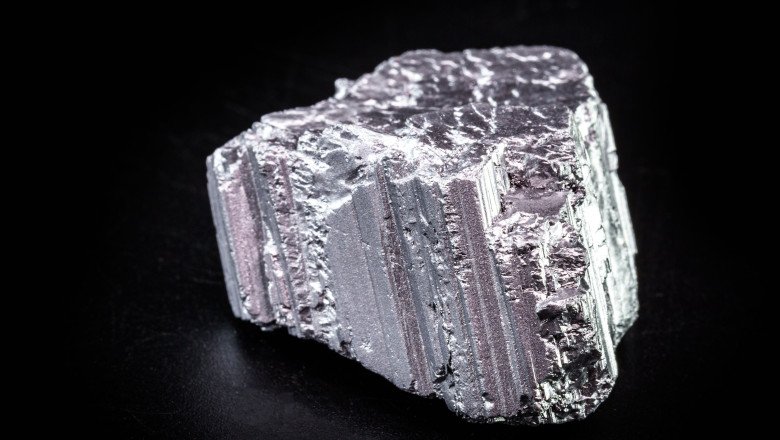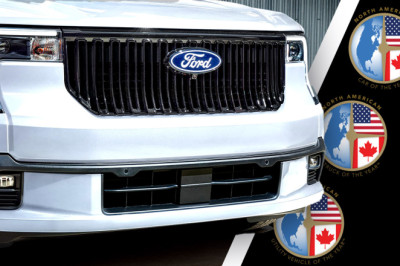
- Many electric vehicles (EV) use the permanent magnetic properties of rare earth metals to make their electric motors as efficient as possible.
- Earlier this year, Tesla announced that it would ditch rare earth metals (such as neodymium) in its motors by some unspecified date, citing supply chain issues and overall toxicity of sourcing them.
- Experts are exploring how Tesla will pull off this engineering feat, and if it’ll require some performance trade offs.
The automotive industry is embracing the electric revolution, transitioning from gas-powered vehicles to emissions-free electric ones. However, this transition is not without challenges, and one major obstacle lies in sourcing rare earth metals used in the powerful magnets that drive electric motors.
Neodymium, in combination with elements like iron and boron, creates a continuous magnetic field crucial for motor rotation in electric vehicles, such as those produced by Tesla. While earlier Tesla models used AC induction motors that did not require rare earth metals, the introduction of the Model 3 necessitated their usage. Although Tesla has reduced its reliance on these metals by 25% since 2017, the Model Y still uses approximately 520 grams of rare earth metals.
Sourcing these metals presents a challenge as their name suggests. While they can be found worldwide, China has emerged as a dominant supplier, leading to concerns over geopolitical tensions and supply chain vulnerabilities. To address these risks, the Biden Administration's Inflation Reduction Act calls for domestic production of critical electric vehicle components, reducing dependence on foreign sources. Although eliminating rare earth metals entirely poses an engineering challenge, it promises long-term financial and political benefits.
Seeking alternatives, ferrite, a ceramic iron-oxide compound commonly found in electronics, emerges as a leading candidate. Ferrite offers advantages such as corrosion resistance and low cost. However, ferrite magnets have only about one-tenth the magnetic strength of neodymium magnets, which means they would likely need to be larger and heavier to achieve similar performance. In an industry where maximizing efficiency and range is vital, larger and heavier magnets are generally undesirable.
Implementing a neodymium-free design using ferrite magnets would require motor reworks and innovative engineering solutions. While Tesla's progress in this regard remains uncertain, it is important to note that the company's rare earth metal usage represents only a small portion of global consumption. The demand for these metals is expected to persist in the electronics and electric vehicle sectors for the foreseeable future.
Reducing reliance on rare earth metals presents financial and political benefits, including diversified supply chains and reduced geopolitical risks. However, finding alternatives that offer comparable performance while maintaining efficiency and cost-effectiveness remains a complex challenge. As the electric vehicle market continues to expand, rare earth metals are likely to remain crucial in driving the EV revolution forward.
The Electric Vehicle (EV) Revolution: Exploring Alternatives to Rare Earth Metals
Q: Why are rare earth metals important in the EV industry?
A: Rare earth metals, such as neodymium, play a crucial role in the creation of powerful magnets used in EV motors. These magnets interact with electromagnetic fields to rotate the motor's shaft and propel the vehicle efficiently.
Q: How has Tesla addressed the use of rare earth metals in its EVs?
A: Tesla has made efforts to reduce the reliance on rare earth metals in its vehicles. While earlier models used AC induction motors that didn't require rare earth metals, the Model 3 and subsequent models incorporated always-on magnetic motors, resulting in the need for such metals. Tesla has reduced its reliance on these metals by 25% since 2017, but they are still used in the Model Y.
Q: Why is China a significant player in the rare earth metals market?
A: China has become a dominant source of rare earth metals, leading the global market. While these metals can be sourced from various locations worldwide, China's control over the supply chain raises concerns, particularly in the context of strained U.S.-China relations.
Q: How is the U.S. government addressing the reliance on foreign rare earth metals?
A: The Biden Administration's Inflation Reduction Act calls for the domestic production of critical components for electric vehicles, aiming to reduce reliance on foreign sources. This approach seeks to mitigate potential financial and political risks associated with relying heavily on a single country for rare earth metals.
Q: What is a potential alternative to neodymium in EV motors?
A: One candidate to replace neodymium is ferrite, a ceramic iron-oxide compound commonly found in electronics. Ferrite offers benefits such as corrosion resistance and low cost. However, it has approximately one-tenth the magnetic strength of neodymium, which may require larger and heavier magnets in EV motors.
Q: What challenges does the use of ferrite magnets pose for EVs?
A: The lower magnetic strength of ferrite magnets means they would likely need to be larger and heavier than neodymium magnets. In the EV industry, where maximizing efficiency and range is crucial, increased size and weight are generally undesirable.
Q: Can a neodymium-free design be implemented without compromising performance?
A: Implementing a neodymium-free design using ferrite magnets would likely require a rework of the motor, which may present engineering challenges. Tesla's potential success in this endeavor remains uncertain, and even if achieved, the broader demand for rare earth metals in electronics and EVs is expected to persist.
Q: Will the EV industry continue to rely on rare earth metals in the future?
A: It is likely that rare earth metals will remain essential for the EV industry and electronics as a whole. While efforts are being made to reduce reliance on these metals, finding suitable alternatives with comparable magnetic properties and performance is a complex task that may take time to fully realize.
Q: What are the implications of reducing the use of rare earth metals in EVs?
A: Reducing the reliance on rare earth metals in EVs could have long-term financial and political benefits, particularly in terms of diversifying supply chains and mitigating geopolitical risks. However, finding alternatives that meet the necessary performance requirements while maintaining efficiency and cost-effectiveness poses significant engineering challenges.
Q: How does the use of rare earth metals impact the EV market as a whole?
A: While Tesla's efforts to reduce rare earth metal usage are noteworthy, the company represents only a small fraction of the overall global consumption. As the EV market continues to expand, the demand for these metals is likely to persist, highlighting the ongoing importance of rare earth metals in powering the EV revolution.














